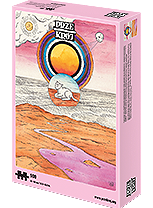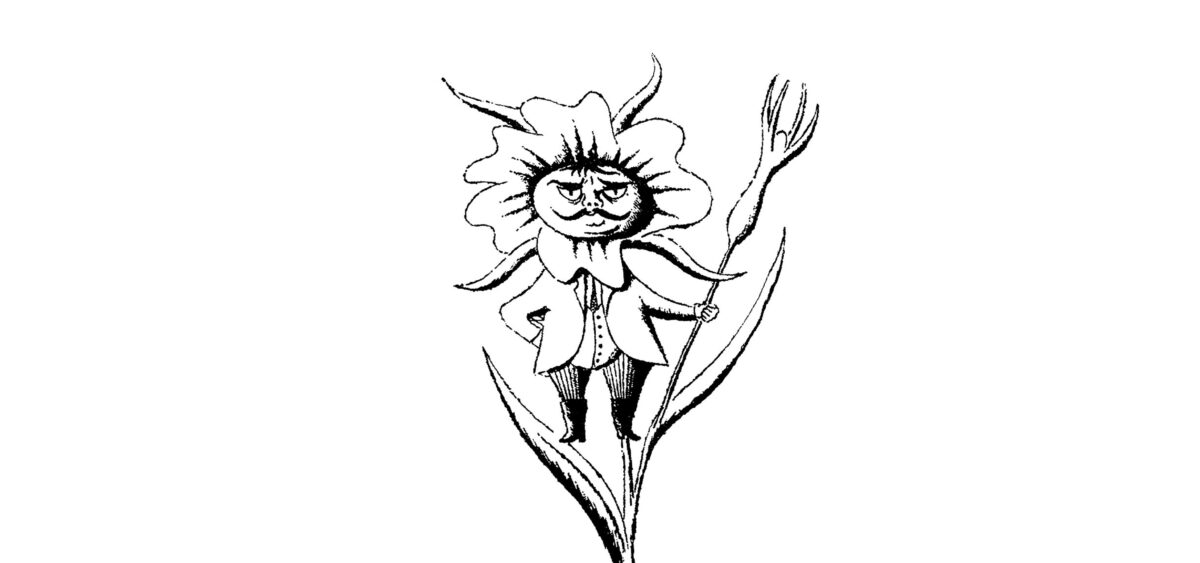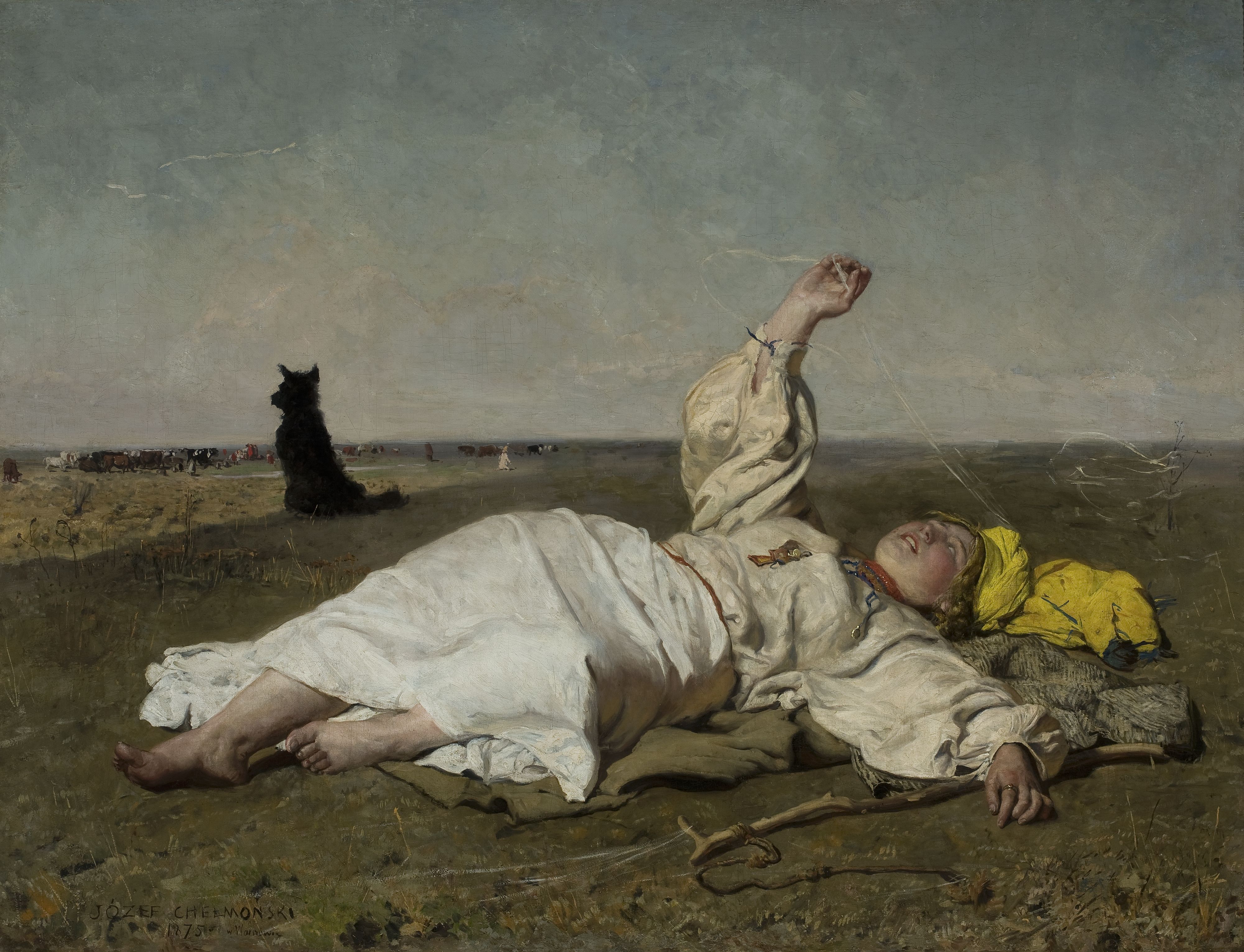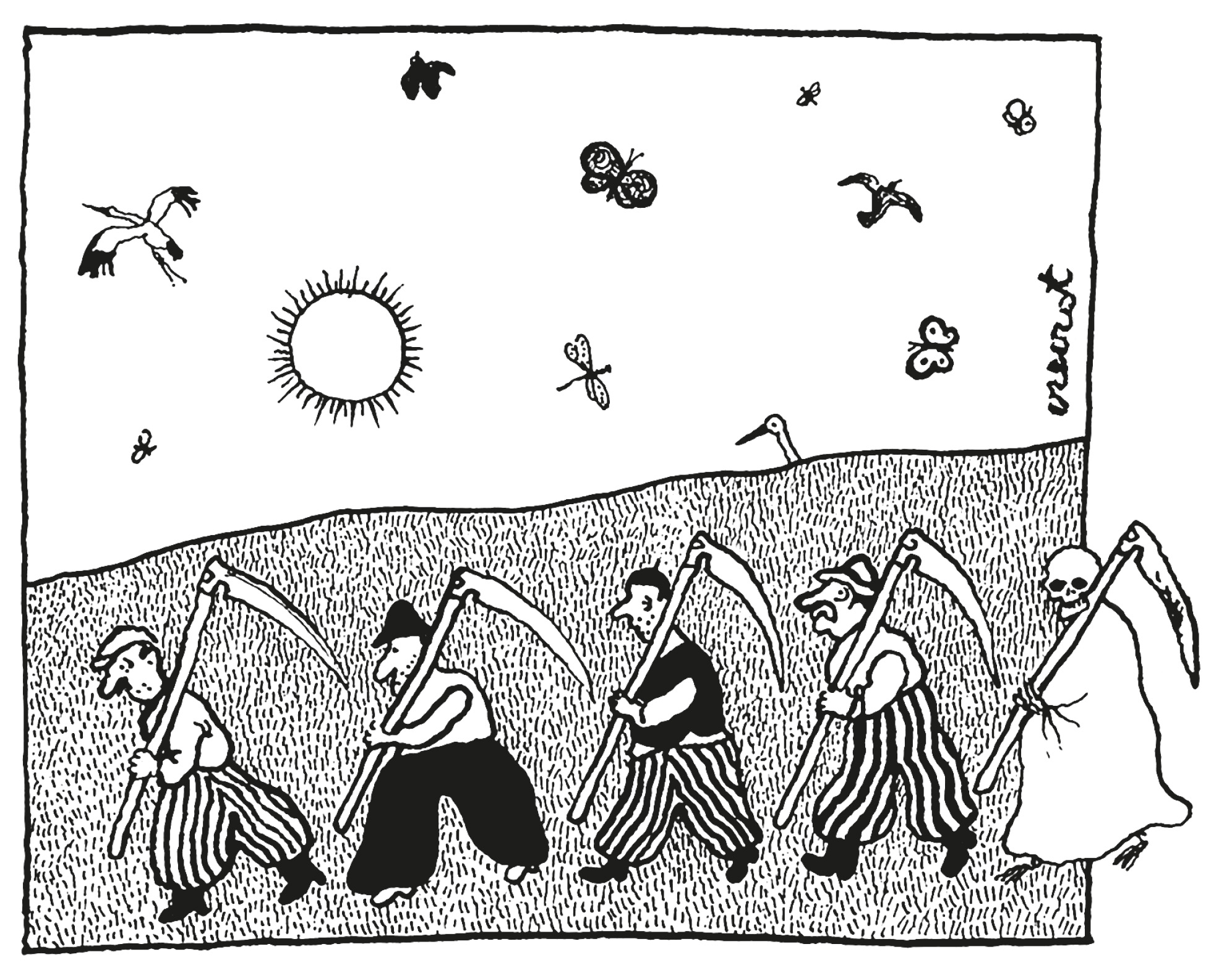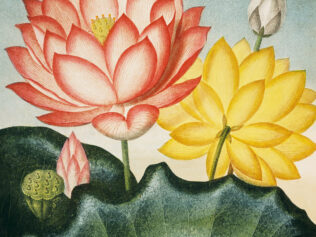
In the springtime, the Babalskis’ blooming orchard transforms into a world of pink and white. The birds sing, and the bees, including the wild ones, bustle about just like they do in their hives.
“Mr Mietek, what’s springtime all about?”
“Spring is a time of blooming, of great chaos in nature; every plant is working overtime to put out flowers and fruit. The animals also sense the spring, because that’s when life arises. It’s a period of reproduction. They’re more aroused. The cows bellow, they want to get out into the fields. People too: you have a desire to work, more joy, a completely different perspective.”
“And I often feel uneasy in the springtime.”
“The more time you spend in the fresh air, the more calmly your body will react. And if you sit in an air-conditioned space the whole time, isolated from nature, it will be a shock when you go outdoors. Too much sun or rain, the wind blows, and you start suffocating. You have to adapt. For example, sunbathing creates melanin, which protects your skin against excessive sunlight. But people cover themselves with sunscreen. Well, but what can you do if you sit in an office for eleven months of the year, and then go out in the sun for one? How else are they supposed to cope with it?”
“So let’s get back to the cows.”
“Our cows roam free the entire year. They can go out into the run whenever they want. But when things turn green in May, they go to the pasture, and live there until autumn. They sleep under the trees. They have grass, herbs, they get water. When they’re lacking a nutrient, they nibble on hazel or birch leaves, or eat young pine shoots.”
“And us? What should we eat in the springtime?”
“Just like the cows, we use the energy that’s in the trees, the plants. So when you eat green, living things, you catch more of this energy. In the spring, the first nettles appear. You can add them to salads, dress them with oil and lemon. But they’re the best thing in the world if you eat them right out of the ground. You just have to crush them well, then you destroy the cnidocytes. If nettles didn’t sting, they would cease to exist! All the animals would eat them, because they have so much energy and so many nutrients. They say the butterflies are the nettle’s flowers. And they land on them because it’s the safest place.”
“When do you start working in the fields?”
“There used to be a saying: ‘When it’s St. Joe’s, put in the rows.’ Rows, meaning the furrows, and St. Joseph’s Day is 19th March. But it doesn’t work as well now as it used to. The best time for sowing is before Easter, which depends on the moon. That’s why we always sow the crops during Holy Week.”
“What about fertilizer?
“In organic farming we don’t fertilize. Just manure from our cows before sowing. In the early spring, you mix it into the soil – very shallow, because it only breaks down properly when exposed to oxygen. Above 10° Celsius it starts to break down, then the transmission of energy starts, and it’s stored by the sown plants. If you put down manure and don’t sow, you get all kinds of weeds, because they grab this energy.”
“OK, so the manure is spread, the plants are sown. What’s next?”
“Next comes the period where the third and fourth leaves appear, and the plant spreads out. Then you should harrow the field, to strengthen the plants, get them working. Just not when it’s going to freeze at night. And always before vernalization! Because after that, the blades of grain shoot out and the harrow could damage them.”
“And before vernalization it doesn’t?”
“At that time the plant is still tiny and flexible, but it’s also deeply rooted, so the harrow only destroys the weeds, which at this stage have weak roots and aren’t a threat. And the plant will have a lot of space and will spread out.”
“How will the spring be this year? Sunny?”
“In March there will be a break: the Mercurial year will end and our planet will be under the ascendancy of the moon. And that means a rainy year. Of course there will be heat waves too, but this year won’t be too fertile.”
“I thought rain was good for plants.”
“There’s lots of diseases then, because rain provides good conditions for fungus.”
“So spring storms aren’t good either?”
“Storms are actually a boon for nature! There’s nitrogen in the air, but it’s dead – the plants can’t use it. And only an atmospheric discharge makes it liven up, mix with the rain and feed the plants. Another thing is ozone, which is generated during discharges. It destroys the fungi and other diseases; the air is immediately cleaned up. The boom of the thunder is to scare away evil. That’s why the people who are afraid of storms don’t have clean consciences. But let’s get back to the fungi. Because fungal spores are everywhere. Your skin is generally shielded from them by a protective layer, which shouldn’t be washed away too often. There’s a saying: frequent baths shorten your life! You case off your bacterial flora and the fungal spores can get into your body more easily. It’s similar when there’s a wet year: in the rain, the plants’ spiracles are open – those are the openings that take in water. And that’s how the fungal spores get inside. The same thing happens during a full moon, which is a water element. Then the water from the soil moves higher, the dew is intense. The humidity increases, the spiracles open and the fungi can attack.”
“Oh, that’s not good.”
“You have to come to terms with it. That’s why monocultures are bad. You need to have more plants: one dies out, and the other yields twice as much. There’s always a balance in nature. If a plant is impaired, it gets destroyed by fungus or other pests. That’s the order of things. You can say that diseases and fungi are the guardians of nature. I don’t use any chemical sprays, because every intervention has negative effects – the more you destroy, the stronger the attack. Because the first to fall are the weakest fungi, and then the stronger ones have room to thrive. In organic farming you have to be happy that things are growing for you. And when something bad is happening, don’t look. In other words: it’s an ill wind that blows no-one any good. If you get sick, be glad you’re sick.”
“Excuse me?!”
“Because that means that in a little while, you won’t be sick! Don’t worry! The more you worry about a disease, the more you’re exposed to it. Many people run around to specialists and do tests. If the doctor doesn’t find anything – wow, what a bad doctor, I have to go to a different one. Don’t ever go looking for trouble.”
“That’s easy to say.”
“That’s why they say it’s better to be a donkey than a cow. Because if a cow eats something, it chews and chews… and a donkey jumps up, farts, discards it and moves on. And sometimes that’s what you have to do! Because women have the gift of clairvoyance. But for this gift to be visible, you can’t live in fear; stress disrupts it. When a mother is constantly afraid that her child will fall ill and is just waiting for it to happen – the child really will become ill. Instead, she should think about how the child is healthy and strong, and make sure they get sweaty and dirty twice a day. Because when you sweat, you clean out your body; you sweat out the bad. And if you don’t sweat from effort, you sweat from fear. People can’t live in stress, but in freedom. That means you have to believe in yourself. That you’re strong and content. It doesn’t matter if you have teeth or not. The point is everyone can believe they’re beautiful.”
“Mr Mietek, but how do I do this?”
“Don’t look at flaws; look at what’s good. Be free, and you’ll be happy!”
Translated from the Polish by Nathaniel Espino

